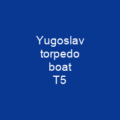The Kaiman Class: A Brief Overview
Imagine a fleet of swift, agile ships that once roamed the high seas, their names echoing with the might of the Austro-Hungarian Navy during World War I. These were the Kaiman-class torpedo boats, built between 1904 and 1910 by three renowned shipyards: Yarrow Shipbuilders, Stabilimento Tecnico Triestino, and Ganz-Danubius. With a total of 24 vessels, these ships were more than just mere vessels—they were the alligators of the Austro-Hungarian Navy, their names reflecting their fearsome nature.
The Design and Specifications
Each Kaiman-class boat was a marvel of engineering. At 56 meters in length with a beam of just 5.5 meters, they were compact yet powerful. Their single four-cylinder vertical triple expansion engine, coupled with two coal-fired Yarrow boilers, propelled them to an impressive top speed of 26 knots. This made them the swift hunters of the Austro-Hungarian fleet.
Their armament was equally formidable. Four Škoda 47mm L/33 guns and three 450mm torpedo tubes equipped each boat, making them a versatile force capable of both surface combat and underwater attacks. With a coal capacity of 47 tonnes, they could travel up to 500 nautical miles at their top speed, ensuring they were always ready for action.
Operational Roles
The Kaiman-class boats played multiple roles during World War I. They served as swift escorts, patrolling the seas and providing support to larger vessels. Their ability to conduct shore bombardments made them invaluable in coastal operations, targeting enemy infrastructure with precision.
During the war, these boats were split between two flotillas based in Cattaro and Pola. The 1st Torpedo Flotilla, led by scout cruiser Saida, had its own groups of Kaiman-class boats, each tasked with specific missions. Similarly, the 2nd Torpedo Flotilla, under Admiral Spaun, also had its share of these agile vessels.
Actions and Battles
The Kaiman-class boats saw action in various operations during World War I. For instance, on July 24, 1914, three of them accompanied Admiral Spaun to the Bocche di Cattaro but returned due to the threat from Allied forces. Later, they participated in shore bombardments and even conducted raids and landings.
One notable incident involved a French submarine, Cugnot, which was spotted by 57 T, commanded by Linienschiffsleutnant Albert Heinz-Erian. This led to the destruction of an old pier and the capture of Rumija, severely impacting Montenegrin supply lines.
As the war progressed, these boats continued their operations, targeting Italian cities along the Adriatic coast. They also faced challenges from Italian submarines, with 51 T being torpedoed by Papin on September 9th, 1917.
The End of an Era
By late 1918, plans were in place to replace the aft torpedo tube with a single Škoda 66mm anti-aircraft gun. However, this change never came to fruition. In December 1918, 52 ran aground near Split, marking the end of an era for these mighty ships.
After World War I, the Kaiman-class boats were distributed among Great Britain, Italy, and Yugoslavia. The Yugoslavs retained four vessels but discarded them between 1928 and 1930, ending their service with a bang rather than a whimper.

The Kaiman-class torpedo boats were more than just ships—they were the alligators of the Austro-Hungarian Navy, their legacy a testament to the ingenuity and bravery of those who served. Their story is one of swift action, strategic operations, and ultimately, the end of an era in naval history.
The Kaiman-class torpedo boats stand as a reminder of the dynamic nature of warfare and the importance of adaptability in the face of changing circumstances. Their journey from construction to decommissioning reflects the broader narrative of World War I, where technology and strategy continually evolved on the high seas.
You want to know more about Kaiman-class torpedo boat?
This page is based on the article Kaiman-class torpedo boat published in Wikipedia (retrieved on November 29, 2024) and was automatically summarized using artificial intelligence.







